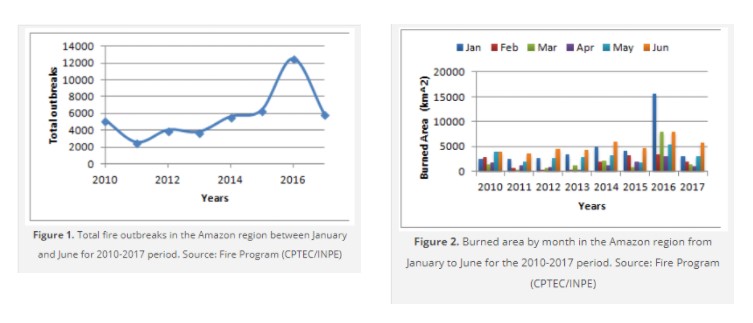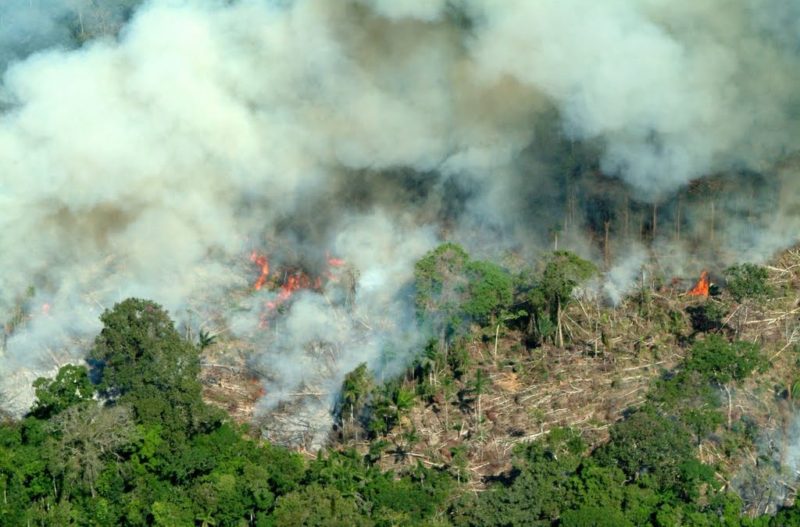By Pires, L. B. M. and Freitas, A. C. V.
Atlanta, July 31, 2017.
As recently reported in Brazil’s EXAME magazine on June 26 of this year, a 29% increase in the deforested area of the Brazilian Amazon was recorded between August 2015 and July 2016, according to the National Institute of Space Research (INPE). However, a considerable reduction in deforestation due to outbreaks of fire now may be occurring in 2017 (Figs. 1 and 2). Amazon deforestation occurs as a result of two main drivers: indiscriminate cutting of trees and fire. Some fires occur spontaneously while others are set deliberately and illegally with the intention of land clearing for commercial uses. A substantial increase in the number of fire outbreaks had been noted in the last few years, especially during 2016, but in 2017, there may already be a sharp drop, reaching levels almost identical to the previous three years. If the period between January and June of each year since 2010 is analyzed, it can be noted that following the peak in the number of fire outbreaks in 2016, the year 2017 is already showing a reduction of 54% in relation to the preceding 2016 year.
The 2015-2016 period was marked by one of the strongest El Niños in history. This was reflected in the increase of the number of fire outbreaks due to the increased duration and intensity of the drought and temperature elevation period. In the 2017 year, a condition of neutrality is established in relation to the El Niño-Southern Oscillation (ENSO) phenomena. This could explain the return to conditions closer to “normal” in terms of fire outbreaks.

Figure 2 shows an increase in the number of fire outbreaks, which was likely strongly influenced by the El Niño phenomenon, and that in the first half of 2017 the number of fire outbreaks have shown a downward trend in relation to the previous year, and a normality condition in relation to the climatology. However, we still have 6 months to go in 2017 and we are entering into the historically worst period for fire outbreacks. Therefore, it would be premature to conclude that Brazil has been maintaining an increasing rate of deforestation due to fire, at least in terms of the number of fire outbreaks observed so far this year.

